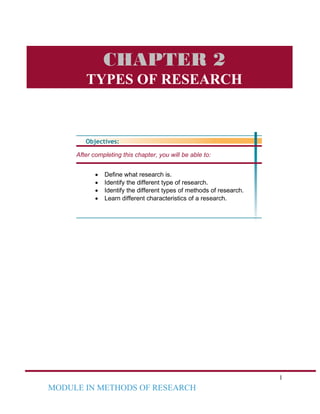This document defines research and outlines different types of research. Research is a systematic investigation to discover answers and contribute to existing knowledge. There are two main types: pure research aims to develop and test theories while applied research solves practical problems. Research can also be classified by its objectives (descriptive, correlational, explanatory, exploratory), application (pure vs applied), and approach (structured/quantitative vs unstructured/qualitative). The key characteristics of valid research are that it is controlled, rigorous, systematic, valid, empirical, and able to withstand critical analysis.


































